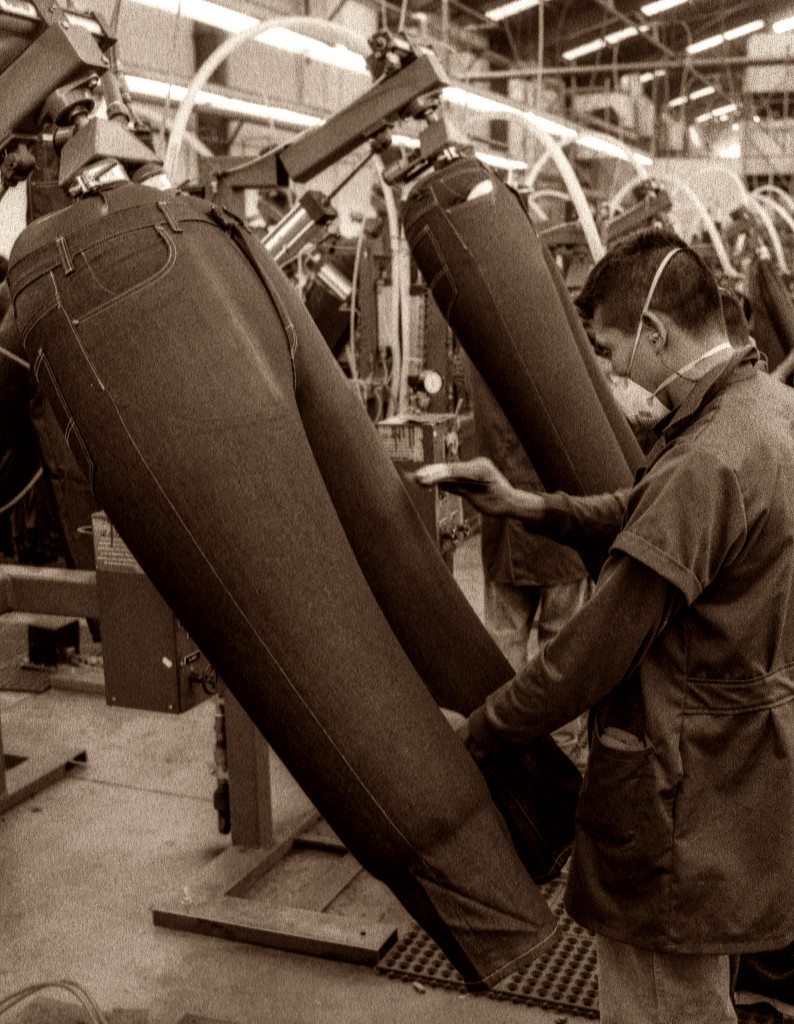In the early 2000’s, I was a Senior Photographer for Gap Inc., in San Francisco. One of the great things about working for such a large corporation is the opportunity to experience things that you might not otherwise be able to.
Gap was heavily involved with Habitat for Humanity and sponsored a few trips each year for employees. Individuals that had volunteered for local non-profits would be invited along to work on building houses for a week at a time. I was lucky enough to be invited on one of their trips to Guatemala.
As part of the trip, a tour of one of the denim factories that Gap worked with was arranged. I was extremely excited to be able to see one of these factories up close…..but pessimistic about my chances of photographing (based on the horrific stories we have all heard about manufacturing in 3rd world countries). To my surprise, the owner of the factory actually encouraged me to take photos as we were shown around (In the end, I figured out that we, as Gap Employees, probably weren’t going to be shown anything that would remotely look bad).
The factory itself was huge, occupying an entire city block and employing over 10,000 people. As we toured, interesting facts surfaced. Things like – Factories around the world all pay the same – so this Guatemalan factory competed with factories in China, India and other places where wages were rock bottom. This meant that the place that they were really able to make money was on minimizing wasted cloth. The only computers in the entire place were used for laying out patterns on the rolls of fabric, in order to cram as many pairs of jeans as possible onto the denim.
We also asked lots of questions about minimum age requirements for the factory. It was explained to us that they were forbidden to use underage employees, but sometimes it was next to impossible to establish the age of applicants for the jobs. Most people in Guatemala didn’t have birth certificates, so Gap actually had a person at the factory that would travel out to the villages that people were from and question family members and neighbors if there were any questions about the age of an applicant.
As we were touring the facility, I was using two film cameras. One for color, and one for black and white. As I finished a roll in the camera with color film in it, I pushed in the rewind button and attempted to crank the film back into the cassette. To my astonishment, the film wouldn’t budge!!! Something had malfunctioned and the film wasn’t able to be rewound into the cassette, which meant that I couldn’t put a new roll of film into the camera. I was in a slight panic, and couldn’t stop and figure out what might have happened as we were continue walking through the factory and I needed to keep shooting with my other camera (in the end, I ended up losing the entire roll of film).
I kept shooting with my black and white camera, which had T-Max 3200 film in it. Closer examination will reveals huge grain in the image, but back then it was the only way to shoot in the low light conditions of the factory.
The image above shows a pair of jeans being sanded by hand. They are attached to a rubber bladder that is inflated into each leg. I had always assumed that the finishes on a pair of jeans were all done by machine….but they aren’t. Stone washing is exactly what is says – large industrial washers with stones in them are filled with jeans and ran through a cycle. Jeans that look “pre-worn” are actually hand sanded like in the image. “Whiskers” are added the same way. Sandblasted jeans are actually sandblasted. It’s all very labor intensive. And fascinating to photograph.
Thanx for listening.
AL

